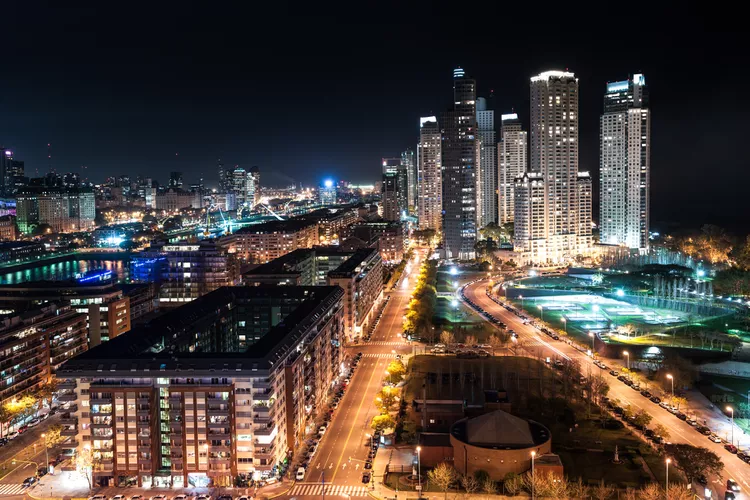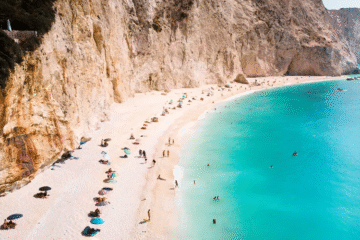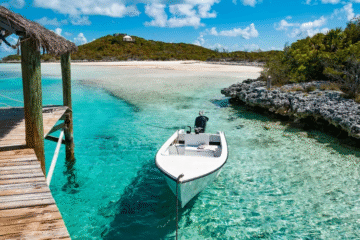From speakeasies to stargazing, here’s how to get to know Argentina’s capital.

Buenos Aires is a sprawling metropolis, home to more than 3 million residents and seemingly infinite things to do and see. Travelers visiting the capital city are sure to find just about anything they’re looking for, from world-class art museums to empanada-making classes.
As a full-time digital nomad, I’ve spent more time in Buenos Aires than anywhere else, because there are so many reasons to keep coming back. With some help from Kyara M. Velarde, a tour guide at the Mariano Moreno National Library, and Darío Adrián, an organizer of the Buenos Aires Digital Nomads group, I’ve compiled a list of the 25 best things to do in Buenos Aires.
Top 5 Can’t Miss
- Kick off your tour of Buenos Aires by walking from the historic main square to the iconic obelisk, with a stop at an old-school cafe.
- Stroll down the Caminito to see the brightly colored buildings and murals of La Boca.
- Join the fan fervor at the largest soccer stadium in South America.
- Shop the vintage stalls at San Telmo Market and order something delicious from the food vendors.
- Be seduced by the tango, the dance that originated in the city and is a mainstay of Argentinian culture.
01of 25
Walk from Plaza de Mayo to the obelisk.
:max_bytes(150000):strip_icc():format(webp)/TAL-obelisk-TODOBUENOSAIRES0823-2b31169fa7dc428fa6fb356776845e69.jpg)
There’s no better place to start your tour of Buenos Aires than the city’s central square. Plaza de Mayo has been a gathering point for many momentous events, from political protests to World Cup victory celebrations. It’s overlooked by the Casa Rosada, the distinctive pink palace that houses the office of Argentina’s president.
As you walk diagonally from Plaza de Mayo toward Obelisco de Buenos Aires, make a detour to one of the area’s historic cafes, such as Café Tortoni on Avenida de Mayo. “Each side of the obelisk represents different historical events of Buenos Aires,” says Velarde. “It’s also considered the heart of the city, the spot where the main avenues intertwine.”
02of 25
Stroll the streets of La Boca.
:max_bytes(150000):strip_icc():format(webp)/TAL-la-boca-TODOBUENOSAIRES0823-29c07d641dcb416c9f68066e68b9ffac.jpg)
The neighborhood of La Boca is south of Puerto Madero and is famous for intricate street murals and brightly colored shacks. It’s located on what used to be the city’s largest port, and immigrants used found materials to build their homes here. Be sure to walk down the Caminito, a traditional alley and museum lined with these modest dwellings. The Boca Juniors soccer club has a stadium here as well.
03of 25
Watch a soccer match.
:max_bytes(150000):strip_icc():format(webp)/GettyImages-2154179167-c3562f8795f74476a0e8803cb2b91b75.jpg)
Speaking of Boca Juniors, you can’t go to Buenos Aires without seeing a soccer match, as the sport is an integral part of Argentinian life. Check out the schedule for upcoming matches at the Estadio Monumental, the largest soccer stadium in South America with a capacity for 86,000 fans. As you’re walking around the city, you will also notice murals of Lionel Messi, who helped Argentina win the World Cup in 2022.
04of 25
Eat and shop at San Telmo Market.
:max_bytes(150000):strip_icc():format(webp)/tourists-shop-in-san-telmo-flea-market-in-old-town-buenos-aires--argentina--922997056-013f97e7f640463daf50736c3b86fc50.jpg)
San Telmo Market is an enormous space that hosts myriad food stalls and vendors selling handmade and antique goods. You can find almost any cuisine here, from the Argentinian choripán sandwich to Spanish tapas. “You cannot miss Plaza Dorrego, which [is nearby and] has shopping, galleries, and street artist shows,” says Velarde. “It’s best to go on Sundays from 10 a.m. to 7 p.m.”
While you’re roaming around San Telmo, keep an eye out for the statue of Mafalda, an important cartoon character representing the middle class and youth. You can find her sitting on a bench on the corner of Defensa and Chile streets.
05of 25
Enjoy a tango show.
:max_bytes(150000):strip_icc():format(webp)/TAL-tango-TODOBUENOSAIRES0823-eae76c5ff06c4a6bb5ab90fb83e2591e.jpg)
Tango originated in Buenos Aires in the 19th century and has remained an important part of Argentinian culture ever since. Around San Telmo Market you will likely see dancers performing in the streets; you can also find ticketed performances at venues around the city like Rojo Tango and Bar Los Laureles.
06of 25
Wander around Recoleta Cemetery.
:max_bytes(150000):strip_icc():format(webp)/TAL-recoleta-cemetery-TODOBUENOSAIRES1223-506623dfa6bc4c8cb672c55b08d3dfdc.jpg)
A must-see attraction in Buenos Aires, Recoleta Cemetery is where some of the most important people in Argentina’s history are buried. Mausoleums are laid out in a city-like design, so reserve plenty of time to explore. Eva Perón, the former first lady famous for the passage of women’s suffrage in Argentina, is buried here. For international tourists, admission costs around $15; you can buy a ticket in advance or at the cemetery.
“During the day, wander through the hauntingly beautiful Recoleta Cemetery and its architecture,” says Adrián. “Guided tours explaining all the stories revolving around the area are extra but worth it.”
07of 25
Explore Recoleta beyond the cemetery.
:max_bytes(150000):strip_icc():format(webp)/GettyImages-87340597-b6193479ebdd42e581b96b922f56c005.jpg)
Right next door to Recoleta Cemetery, in the neighborhood of the same name, is the Recoleta Cultural Center, where you’ll find a variety of exhibitions from local artists, plus concerts and workshops.
“If you go to Recoleta, you shouldn’t miss ‘Floralis Genérica,’ a giant flower that honors all the green places, gardens, and flowers of Argentina,” says Velarde. The stainless steel sculpture in Plaza de las Naciones Unidas is kinetic, opening its petals in the morning and closing them in the evenings. “Another must for Recoleta is Mariano Moreno National Library, which is a blend of culture, politics, and history, all in one place.”
08of 25
Bike along the waterfront at Puerto Madero.
:max_bytes(150000):strip_icc():format(webp)/TAL-puerto-madero-TODOBUENOSAIRES0823-57ff59b34ef54acca1e893cde4aff799.jpg)
This once-neglected port features gleaming skyscrapers, luxury hotels, and even an adjacent ecological reserve. Puerto Madero looks best at night when the city’s lights and bridges illuminate the area, but daytime trips are great for getting out in the fresh air.
“Rent a bike and cycle along the modern waterfront district, or take a walk around it, enjoying the scenic water views and architectural beauty,” says Adrián. “Plenty of restaurants, bars, and relaxing spots can be found here.” After you’ve worked up an appetite on the trails, head to the all-you-can-eat grilled meats at Siga La Vaca, a quirky waterfront steakhouse.
09of 25
Visit Chinatown.
:max_bytes(150000):strip_icc():format(webp)/TAL-chinatown-TODOBUENOSAIRES0823-b0c54e5558e245d19f2b30f413168bd8.jpg)
Within the larger Belgrano neighborhood in northern Buenos Aires, Barrio Chino is the place to soak in the city’s vibrant Asian culture and sample delicious cuisine. Check out top-rated restaurants like China Rose or peruse the small street food stalls. Nearby, one of the most exciting spots for foodies is the new Pasaje Echeverria, a car-free street with trendy restaurants and cafes.
10of 25
Learn to make empanadas.
:max_bytes(150000):strip_icc():format(webp)/TAL-empanada-TODOBUENOSAIRES0823-1e7b168defdb4dd18c87046417dbd65b.jpg)
You can’t go to Argentina without eating empanadas, and it’s even more special if you learn how to make them. I learned to make empanadas, stew, and cookies with dulce de leche at Argentine Cooking Classes, but if you’re more interested in becoming a grillmaster, you can look into Criolla Cooking’s Asado Masterclass.
11of 25
Try mate.
:max_bytes(150000):strip_icc():format(webp)/TAL-mate-TODOBUENOSAIRES0823-de1e4e24e8914d398cd94c0a08ddacd9.jpg)
Mate is a crucial part of Argentinian culture. It’s an herbal drink, similar to green tea but also distinct in itself, rich with caffeine and vitamins. Walking around the streets, you will likely notice people carrying a thermos and a cup with a straw, ready to drink their mate. Preparing mate can be a bit tricky, and you won’t find it for sale in the typical cafe, so if you want to learn the proper technique, book a mate tasting experience.
12of 25
Eat at Don Julio.
:max_bytes(150000):strip_icc():format(webp)/GettyImages-1233011737-c5eb5edaa280439fa1d053a9db07a8d4.jpg)
Don Julio is number three on the list of Latin America’s 50 Best Restaurants, and number 10 on the World’s 50 Best Restaurants list. Order a steak paired with an Argentinian Malbec and you’ll surely never forget your visit. Making reservations in advance is highly recommended, as walk-in seats are limited. From your welcome glass of sparkling wine on, the service at Don Julio is top-notch.
13of 25
Have a drink at a speakeasy.
:max_bytes(150000):strip_icc():format(webp)/GettyImages-177354490-3189bab9e4914fccb40c373a5bc10b17.jpg)
There are several speakeasies throughout Buenos Aires, but my favorite is Florería Atlántico, located in a flower shop. Guests walk through what looks like a walk-in refrigerator door and head downstairs to this swanky bar with craft cocktails. There’s also a New York-themed speakeasy named Uptown, complete with a subway car.
Cap off your evening with some of Buenos Aires’ famous pizza. “Plenty of pizza stores in the city center are open until after midnight, with thick crust and a lot of cheese,” says Adrián, who likes Pizzeria Güerrín and La Americana, among others.
14of 25
Take a stroll around Palermo.
:max_bytes(150000):strip_icc():format(webp)/GettyImages-117184161-fdd96c4a2c9d4219b865c1eba34ff80f.jpg)
The city’s largest neighborhood is generally broken up into several sub-neighborhoods like Palermo Soho or Palermo Hollywood. With romantic, tree-shaded cobblestone streets and dozens of trendy cafes and boutiques, it’s also one of the most fashionable and fun to explore. Start by wandering the streets between Plaza Inmigrantes de Armenia and Plaza Serrano before making your way to top coffee roasters, such Lab Coffee Shop & Training Center, and perusing the racks at ferias like The Vintage Hole.
15of 25
Try asado.
:max_bytes(150000):strip_icc():format(webp)/TAL-asado-TODOBUENOSAIRES0823-901ac408405a421eaba65aec77e8b3bd.jpg)
Asado is the name for both the type of meat and the social event in which you grill and eat it. Many restaurants offer asado as an all-you-can-eat experience, but there’s nothing like a personal invitation from a local, so if you ever get the chance, go. The host typically provides and grills the meat, and guests bring sides and wine for the group. It’s an unforgettable and delicious experience. Vegans don’t have to feel left out either, with restaurants like La Reverde offering herbivores a delicious alternative to this essential cultural experience.
16of 25
See an opera at the Colón Theater.
:max_bytes(150000):strip_icc():format(webp)/TAL-colon-theatre-TODOBUENOSAIRES0425-6306bfb541834b628e0d84a6ac5455d1.jpg)
Opened in 1908, the opulent Colón Theater is considered one of the greatest opera houses in the world. While ticket prices vary, Adrián notes that in addition to great acoustics, the venue offers lower prices than a typical theater experience in the U.S. or Europe. Velarde adds, “In the guided tours, you can access the backstage and delve more into the architectural fantasy.”
17of 25
Go to Centro Cultural Kirchner.
:max_bytes(150000):strip_icc():format(webp)/GettyImages-1871873760-c6328723f6cc4531835137e93cea49a5.jpg)
Centro Cultural Kirchner is located in an old post office and is the largest cultural center in Latin America. Like many cultural experiences in Buenos Aires, Centro Cultural Kirchner is free to enter, and performances here are free as well. You will still need to reserve your entry ticket in advance to secure your spot.
18of 25
Browse in one of the world’s most dramatic bookstores.
:max_bytes(150000):strip_icc():format(webp)/TAL-el-ateneo-TODOBUENOSAIRES0425-35589386600a47ac83d20f929caa833b.jpg)
Buenos Aires is brimming with bookstores, but Ateneo Grand Splendid stands out from the rest. Set in the former Teatro Gran Splendid, dating from 1919, it’s widely considered to be one of the most beautiful bookstores in the world.
The store is an easy walk from the Recoleta Cemetery. “There is only a small selection of English works available,” Adrián notes. Even so, it is worth the visit for the dramatic interior with its gilt-accented balconies and painted ceiling dome.
19of 25
Roam in city gardens.
:max_bytes(150000):strip_icc():format(webp)/japanese-garden--buenos-aires--argentina-580095824-0dc92d9c3e714ecca5d413caade21e92.jpg)
The Buenos Aires Botanical Gardens are located directly beside Plaza Italia, a popular spot for nightlife in Palermo. Just a bit further are the Japanese Gardens, situated next to Hipódromo Argentino de Palermo. These breathtaking gardens are a great place to relax, read a book, and soak in nature. You won’t believe you’re in the middle of the bustling capital.
The Botanical Gardens are “purposefully devised as an oasis safe from the bustling city,” says Adrián. “You can submerge yourself in this green space with lots of biodiversity and greenhouses; activities and special events are available as well.”
20of 25
Watch a horse race.
:max_bytes(150000):strip_icc():format(webp)/GettyImages-521646722-745c287809b0400cbd6c314dcc11d2ca.jpg)
There are more than 1,400 horse races each year at Hipódromo Argentino de Palermo. It’s one of the oldest racetracks in the country and the site of the Gran Premio Nacional, which is like Argentina’s Kentucky Derby. If you travel out to the suburbs to the Hipódromo de San Isidro, you can take in views of the city from one of the largest tracks in the world.
21of 25
Catch La Bomba de Tiempo show.
:max_bytes(150000):strip_icc():format(webp)/GettyImages-1128170863-6de025f1de9d4cffb823bc795afe82ad.jpg)
La Bomba de Tiempo is a Monday-night percussion show at the Ciudad Cultural Konex that’s been running for over a decade. A stage full of drummers transports the crowd with an infectious rhythm that gets the whole room dancing, and every week is different so you can go back again and again. If you can’t make it on Monday, the venue hosts many other worthwhile shows and concerts throughout the week.
22of 25
Stargaze at Planetario Galileo Galilei.
:max_bytes(150000):strip_icc():format(webp)/TAL-planetario-galileo-galilei-TODOBUENOSAIRES0823-3867305d779b4188b8b98214195b1275.jpg)
Planetario Galileo Galilei, located in Parque Tres de Febrero in Palermo, has a museum, exhibitions, and a viewing room where guests can learn about the stars and planets. Built in the 1960s, the space-age structure resembles a planet itself — or a UFO. Fun fact: it’s located on the site of the first recorded soccer match ever played in Argentina.
23of 25
Appreciate art in a museum or two.
:max_bytes(150000):strip_icc():format(webp)/TAL-museo-nacional-de-bellas-artes-TODOBUENOSAIRES0823-113ccd929f1340fa891e2f9be9ca59c2.jpg)
There are many museums in Buenos Aires that are worthy of a visit. For example, Museo Nacional de Bellas Artes in Recoleta has artwork by Van Gogh and Rembrandt. “Admire the impressive collection of European and Argentinian art in this renowned French palace turned art museum,” says Adrián. It offers free admission and is open Tuesday through Sunday.
Another recommendation? Museo de Arte Latinoamericano de Buenos Aires (MALBA), which Adrián says “houses an impressive collection of modern and contemporary Latin American art, like Frida Kahlo.” You can also visit the Museo Evita to “learn about the life and legacy of Eva Perón, one of Argentina’s most iconic figures.”
24of 25
Visit Usina del Arte.
:max_bytes(150000):strip_icc():format(webp)/la-usina-del-arte-la-boca-buenos-aires-argentina-1186158824-bf36900aebf34dea85154c50f6c2b1d3.jpg)
Usina del Arte is an old power plant that has been converted into a cultural center and arts venue in the neighborhood of La Boca. There’s a symphony hall and art exhibitions; check out the venue’s calendar before you visit to see what’s currently on display.
25of 25
Take a boat tour in Tigre.
:max_bytes(150000):strip_icc():format(webp)/TAL-tigre-TODOBUENOSAIRES0823-1a5ccd3cd15c442da71157d173b8f351.jpg)
Adrián recommends taking a day trip to the Tigre Delta, describing it as “a picturesque area of rivers, canals, and islands, where you can enjoy boat rides and relax in nature, as well as visit the famous market, Puerto de Frutos.” According to Adrián, the most scenic way to get there is via the Tren de la Costa, an overground train that runs along the coastline from the Olivos neighborhood just outside the city limits.
The primary way to get around once you’re in Tigre is by boat — there are even boat “school buses.” Go on a boat tour with operators like Natventure Viajes or find a small private boat tour, as these vessels can reach areas that larger boats cannot.



